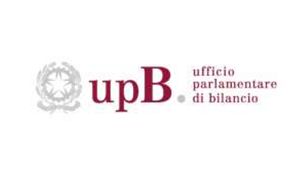(Finance) – “The international context, already fragile in recent years, sees an increase in factors of instability with the resurgence of the Israeli-Palestinian conflict and the consequent rekindling of tensions over raw materials and energy prices. The worsening of uncertainty the difficulty of orienting forecasts increases. The destabilizing effects of the new conflict for the international economy have led to an increase in the prices of methane futures on the Dutch market, which jumped by around 20 dollars on the one-month expiry. In Italy the GDP recorded a setback in the spring, decreasing by 0.4 percent compared to the previous period; the growth achieved in GDP for 2023 is still positive, equal to 0.7 percent. The confidence of families and businesses worsens. The slowdown in Family spending in the spring reflected the weakening of disposable income.” This is what the Note on the October economic situation from the Parliamentary Budget Office.
In the third quarter, signs of caution in consumer spending trends intensified and the confidence index stood at 106.2, approximately two and a half points less than the June high. The uncertainties also weigh on businesses, which – notes the PBO – slow down investments for the deterioration of credit conditions. From the end-of-summer findings, the conditions for investing are worsening and companies foresee a moderate expansion of investments in 2023 compared to 2022. In all production sectors, the composite index of business confidence, obtained as an aggregation of published sector climates by Istat, fell again in the third quarter. In the same period luncertainty measured by the Parliamentary Budget Office index has intensified further, to a greater extent among businesses than among families.
Employment grew in the second quarter and there are no strong wage tensions but the hours worked have decreased. The decline in labor input recorded in the second quarter followed that of GDP (-0.4 percent compared to the previous three months) and mainly affected the industrial sector. According to Workforce Survey the number of employed people has instead increased, mainly in permanent dependent employment and, more marginally, in self-employment. The forward component recorded a decrease for the fifth consecutive quarter. The number of people looking for work in the second quarter fell considerably, as a result of which the lack of use of the labor factor (hours worked) decreased. The gap between job supply and demand remained wide; the vacancy rate increased slightly in the manufacturing and construction industries, while it was stable in services.
According to preliminary indications the number of employed it increased slightly in the summer period and in the July-August two-month period the unemployment rate continued to decline (to 7.4 percent, two tenths less than the previous quarter).
Inflation continues to decline and food prices slow down for the first time in almost two years, although they remain at high levels. Overall, the change in consumer prices for 2023 remains stable, both for the general component (5.7 percent) and for the underlying component. The Italian inflation differential compared to the euro area is decreasing compared to the beginning of the year, falling to 0.9 percent in the third quarter from 1.5 percent in the first. If we exclude some more erratic items and include the sharply declining October figure, the underlying dynamic in Italy is lower than that of the euro area.
Qualitative investigations continue to foreshadow aattenuation of inflationary expectations. A sharp decline in inflation in October is expected, thanks to a significant base effect, linked to the surge observed last year in energy goods; this decline should affect Italy more than its European partners. The effect could be dampened by new tensions in the Middle East.
Overall, the framework of available economic indicators foreshadows a moderate recovery of production rates in the second half of the year, although household and business confidence is worsening. Based on the PBO models, in the third quarter Italy’s GDP would have changed to a limited extent: a slight decline according to the indications of qualitative surveys or a moderate recovery based on supply indicators.
Overall in 2023, thanks also to a gradual improvement in production dynamics in the last part of the year, GDP would increase by 0.8 percentas already prefigured during the validation exercise of the forecasts of the latest update note of the Economic and Financial Document (NADEF). In the medium term, forecast risks are to the downside. The potential adverse shocks on the international scene are accompanied at a national level by the critical issues regarding the progress of the works of the National Recovery and Resilience Plan (PNRR).
The PBO has adopted a new indicator on access to credit which uses a combination of publicly available quantitative and qualitative data, calculated for the Italian economy in the period between the first quarter of 2008 and the third quarter of 2023. The indicator measures the misalignment between credit supply and demand conditions. Index values above 50 indicate restrictive credit conditions, while values below indicate favorable credit conditions. The indicator marks the recession of 2008-09 as the most severe episode of difficulty in accessing credit experienced by the Italian economy in the last fifteen years. The recovery phase that affected 2010 was accompanied by a relatively expansive supply of credit until the second recessionary episode in the period 2012-14, which culminated with the explosion of the sovereign debt crisis. The indicator then settled at low values (below 30), confirming that the obstacles in obtaining bank financing are less stringent in periods of sustained economic growth or accommodating monetary policy. Between the end of 2022 and the start of 2023 the indicator reached a new historical peak, almost similar to that recorded in 2008.
